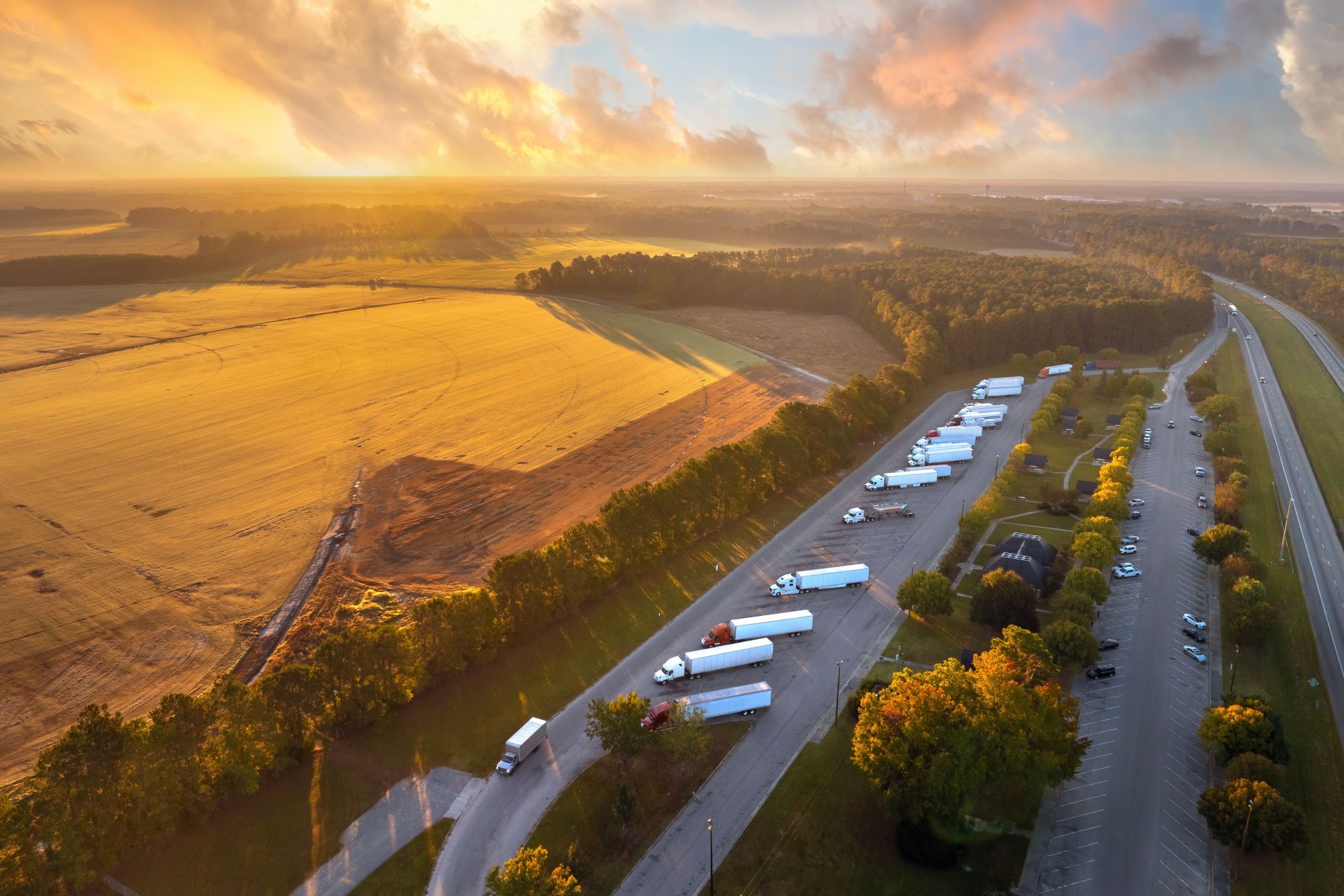
Guest
Как стать водителем грузовика
Создано: 26.09.2025
•
Обновлено: 26.09.2025
Во всей Европе спрос на профессиональных водителей грузовиков как никогда высок. В Великобритании, по оценкам Ассоциации автоперевозок, в ближайшие пять лет потребуется 200 000 новых водителей грузовиков, чтобы обеспечить функционирование цепочек поставок. Такая же ситуация наблюдается и в большинстве стран Европы. По данным Международного союза автомобильного транспорта (International Road Transport Union), в 2024 году в Европе будет 426 000 незаполненных вакансий водителей.
Но это открывает новые возможности. Как мы уже рассказывали, индустрия грузоперевозок предлагает выпускникам школ, рассматривающим альтернативу университету, и взрослым, желающим пройти переподготовку, перспективу стабильной работы. Работа водителем грузовика - это путь к стабильному заработку и структурированной карьере.
Многие задаются вопросом: как стать водителем грузовика? Ответ зависит не только от обучения и лицензий, но и от понимания того, что значит присоединиться к профессии, которая обеспечивает движение европейской экономики.
Кто может стать водителем грузовика?
Одна из главных привлекательных сторон карьеры водителя - ее доступность. Вам не нужно получать высшее образование или проходить многолетнюю специальную подготовку: достаточно иметь стандартные автомобильные права (категория B), чтобы получить профессиональную квалификацию.
Минимальный возраст для обучения составляет 18 лет как в Великобритании, так и во всех странах ЕС, что означает, что выпускники школ могут сразу перейти от получения автомобильных прав к профессиональному обучению вождению грузовых автомобилей. Тем не менее, многие компании предпочитают, чтобы возраст международных водителей был не менее 21 года, учитывая повышенную ответственность, связанную с перевозками на большие расстояния.
Медицинская пригодность также важна. Каждый претендент должен пройти медицинское обследование, прежде чем получить лицензию на управление грузовым автомобилем. В Великобритании это включает в себя ряд тестов, в том числе проверку зрения, измерение кровяного давления и проверку на наличие таких заболеваний, как эпилепсия, болезни сердца или апноэ сна.
В европейских странах применяются единые для всего ЕС медицинские стандарты, регулярное обновление которых позволяет водителям оставаться здоровыми на протяжении всей своей карьеры.
Сколько зарабатывает водитель грузовика?
Для многих людей, рассматривающих возможность перейти на профессиональную работу водителем, главным вопросом является: сколько зарабатывают водители грузовиков?
Ответ зависит от места, опыта и типа выполняемой работы, но во всей Европе эта профессия предлагает конкурентоспособную оплату по сравнению с другими профессиями начального уровня.
● Новый водитель в Великобритании обычно начинает получать около £27 000 в год. Тем, кто переходит на дальние рейсы, особенно на международных маршрутах, зарплата может вырасти до 45 000 фунтов стерлингов, а иногда и больше, если они перевозят специализированные или опасные грузы. тем, кто перевозит специализированные грузы, опасные товары или работает через границу.
● В [Испании] (https://www.salaryexpert.com/salary/job/truck-driver/spain) зарплаты, как правило, ниже, чем в Великобритании, обычно около 36 600 евро, хотя крупные логистические компании в крупных городах могут предложить и больше.
В последние годы в Польше наблюдается высокий спрос на водителей, однако заработная плата остается скромной и составляет в среднем 92 400 злотых (около 21 690 евро).
● [Румыния] (https://www.erieri.com/salary/job/heavy-truck-driver/romania#:~:text=Salary%20Recap,and%20anonymous%20employees%20in%20Romania.) находится в нижней части шкалы, водители обычно зарабатывают 80 550 RON (16 000 евро), хотя международные контракты на перевозку грузов могут значительно увеличить заработную плату.
Конечно, зарплата - это еще не все. Многие компании предлагают оплату сверхурочных, питание или бонусы за выполнение поставленных задач. А поскольку спрос на водителей не замедляется, эта работа обеспечивает такой уровень безопасности, с которым мало какая другая карьера начального уровня может сравниться.
Какие водительские права мне нужны?
Прежде чем сесть за руль грузовика, вам понадобятся соответствующие права. В Великобритании это означает, что вы должны получить не только стандартные автомобильные права, но и права, которые официально называются Large Goods Vehicle (LGV) или Heavy Goods Vehicle (HGV). Эти термины часто используются как взаимозаменяемые, но оба они охватывают одни и те же категории профессионального вождения.
Некоторые начинают с лицензии категории C1, которая распространяется на средние автомобили весом от 3,5 до 7,5 тонны, часто используемые для небольших грузовиков для доставки грузов.
Однако большинство начинающих водителей грузовиков сразу переходят к получению прав категории C, которые иногда называют правами класса 2 HGV. Это позволяет вам управлять жесткими автомобилями массой более 7,5 тонны. Для тех, кто хочет перейти на сочлененные грузовики - более крупные транспортные средства, обычно используемые на междугородних и международных маршрутах, - требуются права категории CE (класс 1).
Наряду с этими квалификациями существует Сертификат профессиональной компетентности водителя (CPC), который является обязательным требованием закона как в Великобритании, так и в ЕС. Этот сертификат включает в себя первоначальное обучение и периодическое повышение квалификации, призванное держать водителей в курсе вопросов безопасности, правил и дорожных навыков.
Эта система отражает систему лицензирования, принятую в ЕС. Основные различия между странами заключаются в поставщиках услуг по обучению, затратах и, в некоторых случаях, в наличии мест для сдачи экзаменов.

Как получить права на вождение грузового автомобиля
Получение лицензии HGV - это первый шаг к профессиональному вождению. В Великобритании вы можете начать этот процесс, если у вас есть стандартные автомобильные права категории B. После этого вы подаете заявку на получение временной лицензии на грузовой автомобиль, которая позволит вам начать обучение вождению крупногабаритных грузовых автомобилей.
Само обучение сочетает в себе теоретические и практические элементы: занятия в классе по безопасности дорожного движения и правилам, а затем вождение тяжелых транспортных средств под контролем. Кандидаты также должны пройти модули для получения сертификата профессиональной компетентности водителя (CPC), который гарантирует, что водители способны не только безопасно управлять транспортными средствами, но и справляться с повседневными обязанностями, связанными с перевозками.
Сколько стоит стать водителем грузовика?
Один из самых распространенных вопросов для тех, кто рассматривает эту профессию, - сколько стоит обучение на водителя грузовика. В Великобритании цены варьируются в зависимости от поставщика услуг, местоположения и того, готовитесь ли вы к получению прав категории C или более продвинутой категории CE. В среднем начинающие водители могут рассчитывать потратить от 2 000 до 3 500 фунтов стерлингов на медицинские осмотры, оплату временных прав, теоретические тесты, практические занятия, модули CPC и итоговый экзамен по вождению. Некоторые компании, особенно крупные логистические фирмы, предлагают схемы субсидирования или полного финансирования обучения в обмен на обязательства по работе, что делает этот путь более доступным.
В других странах Европы цифры не слишком отличаются. В Испании стоимость полного обучения и сертификации обычно составляет от 2 000 до 3 000 евро. В Польше эта цифра ниже и составляет в среднем от 1 500 до 2 500 евро. В Румынии стоимость обучения одна из самых низких в Европе: многие кандидаты платят за обучение от 1 000 до 1 800 евро, хотя зарплата начального уровня, как правило, отражает этот более низкий барьер для входа.
Сколько времени требуется, чтобы стать водителем грузовика?
Время, необходимое для получения квалификации водителя грузового автомобиля, зависит от места обучения, типа лицензии, на которую вы претендуете, и от того, как быстро вы сможете назначить дату экзамена. В Великобритании большинство людей заканчивают обучение и сдают экзамены в течение двух-четырех месяцев. Некоторые интенсивные курсы сокращают этот процесс до нескольких недель, хотя многие водители считают, что интервалы между занятиями помогают им эффективнее усваивать навыки.
В Испании и Польше процесс аналогичен, хотя длинные очереди на сдачу экзаменов могут увеличить сроки. В Польше высокий спрос на профессиональных водителей привел к тому, что в учебных центрах образовались узкие места, поэтому некоторые кандидаты ждут несколько месяцев, прежде чем сдать практический экзамен. Румыния - одна из самых быстрых стран, где обучение и сдача экзаменов часто завершаются в течение восьми-двенадцати недель.
И обучение не прекращается после получения прав. Каждый профессиональный водитель должен проходить 35-часовое обучение по программе CPC каждые пять лет, поддерживая свои навыки в актуальном состоянии и обеспечивая готовность к последним правилам и стандартам безопасности.
Как долго водитель грузовика может находиться за рулем?
После того как вы получите квалификацию, работа будет иметь строгие ограничения по времени, которое вы можете проводить за рулем. Эти ограничения разработаны для защиты водителей и других участников дорожного движения путем снижения утомляемости.
В Великобритании и ЕС действуют одинаковые правила. Водители могут проводить за рулем не более девяти часов каждый день, причем дважды в неделю этот срок может быть увеличен до десяти часов. Недельные ограничения ограничиваются 56 часами вождения, при этом в течение двух недель подряд не должно быть более 90 часов.
Водитель также должен делать перерыв не менее 45 минут после 4,5 часов работы. Кроме того, они имеют право на ежедневный и еженедельный отдых, чтобы восстановить силы перед возвращением на работу.
Эти правила тщательно контролируются, в автомобилях установлены тахографы для учета часов и обеспечения их соблюдения. Для тех, кто работает на дальних маршрутах, например, испанских водителей, пересекающих Пиренейский полуостров, или польских перевозчиков, перевозящих грузы через восточные границы ЕС, эти ограничения определяют ритм работы. Они определяют, когда и где водители останавливаются, что делает доступ к безопасным и надежным местам отдыха жизненно важной частью рабочего дня.
Начало работы водителем грузового автомобиля
Стать водителем грузовика - это не просто сдать экзамены. Речь идет о том, чтобы вступить в роль, которая несет реальную ответственность, но также открывает долгосрочные возможности. При наличии прав, правильного обучения и решимости взять на себя ответственность за жизнь на дороге, эта карьера может обеспечить как стабильность, так и продвижение по службе.
В компании SNAP мы знаем, как выглядят такие поездки. Именно поэтому мы работаем с автопарками и водителями по всей Европе, чтобы сделать их более безопасными, простыми и комфортными - от безопасных парковок и улучшенных бытовых условий до умных цифровых инструментов, которые экономят время и стресс. Независимо от того, начинаете ли вы или уже много лет водите машину, мы готовы поддержать вас на каждом километре пути.
Загрузите приложение intruck app сегодня, чтобы найти надежные парковки, объекты и услуги, куда бы ни привел вас маршрут.



